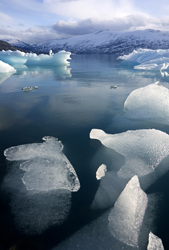Measuring Arctic fresh water in the North Atlantic
Monitoring and understanding climate change enables scientists to develop accurate and reliable models that allow them to predict what sort of climate we will experience over the coming decades. This information can help scientists and policymakers to prepare for disruptions to weather patterns as a result of global warming. The EU funded ASOF-W project was established to record and model exchanges between the Arctic Ocean and subarctic seas and their effect on the climate. The influx of fresh water from Arctic ice into the North Atlantic can have a significant impact on ocean currents which influence European weather conditions. The climate of Scandinavia and north west Europe, which is abnormally warm for its latitude, is particularly sensitive to any perturbations to the factors which maintain it. Possible changes in climate to this region are predicted to be sudden and far-reaching. Fresh water fluxes into northern seas are best monitored at the continental shelf off south east Greenland, a key point for exchanges between the waters of the Arctic and North Atlantic. A joint effort by five European marine research institutes enabled scientists from the University of Hamburg to establish scientific instruments in the area of the south east Greenland shelf. Two arrays of moored sensors protected by buoyant tubes continuously measured changes in salinity and temperature beneath the cover of seasonal sea ice. Researchers used the findings from the ASOF-W project to ascertain the freshwater flux over the south east Greenland shelf. The result was applied to a map of freshwater fluxes for the Arctic and subarctic seas. The data from these activities can be used to create a model of changes to the European climate, linking the respective roles of the ocean, ice and atmosphere.







